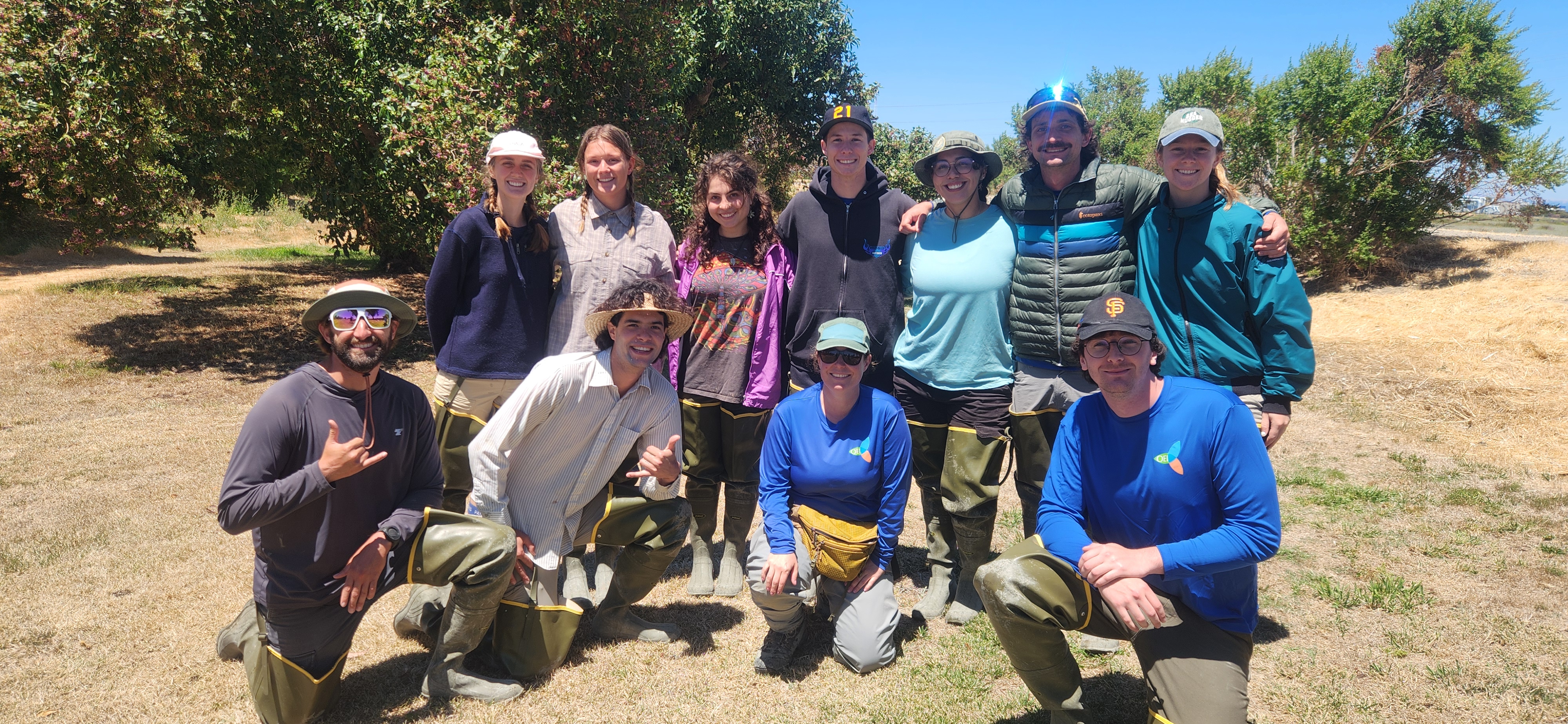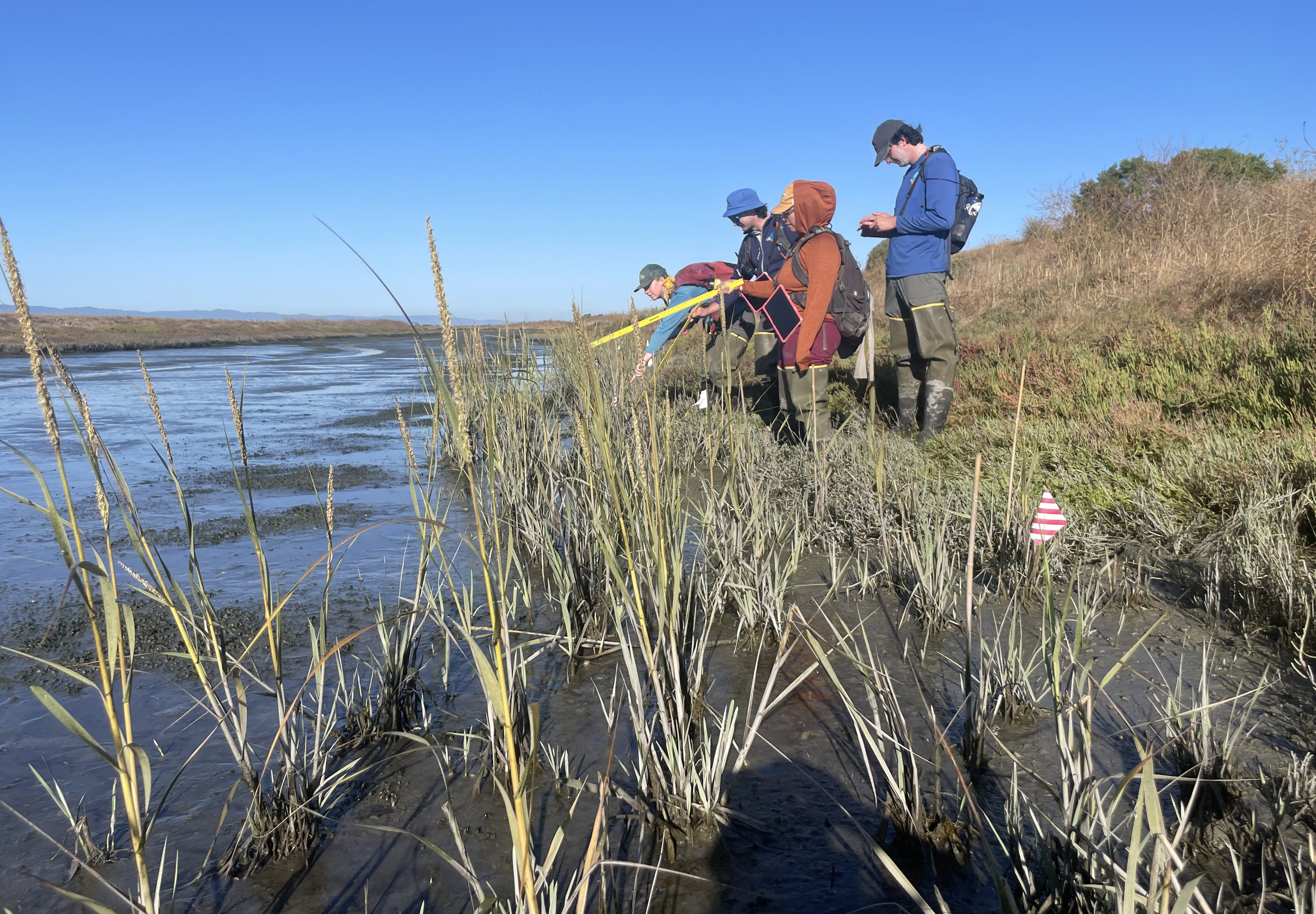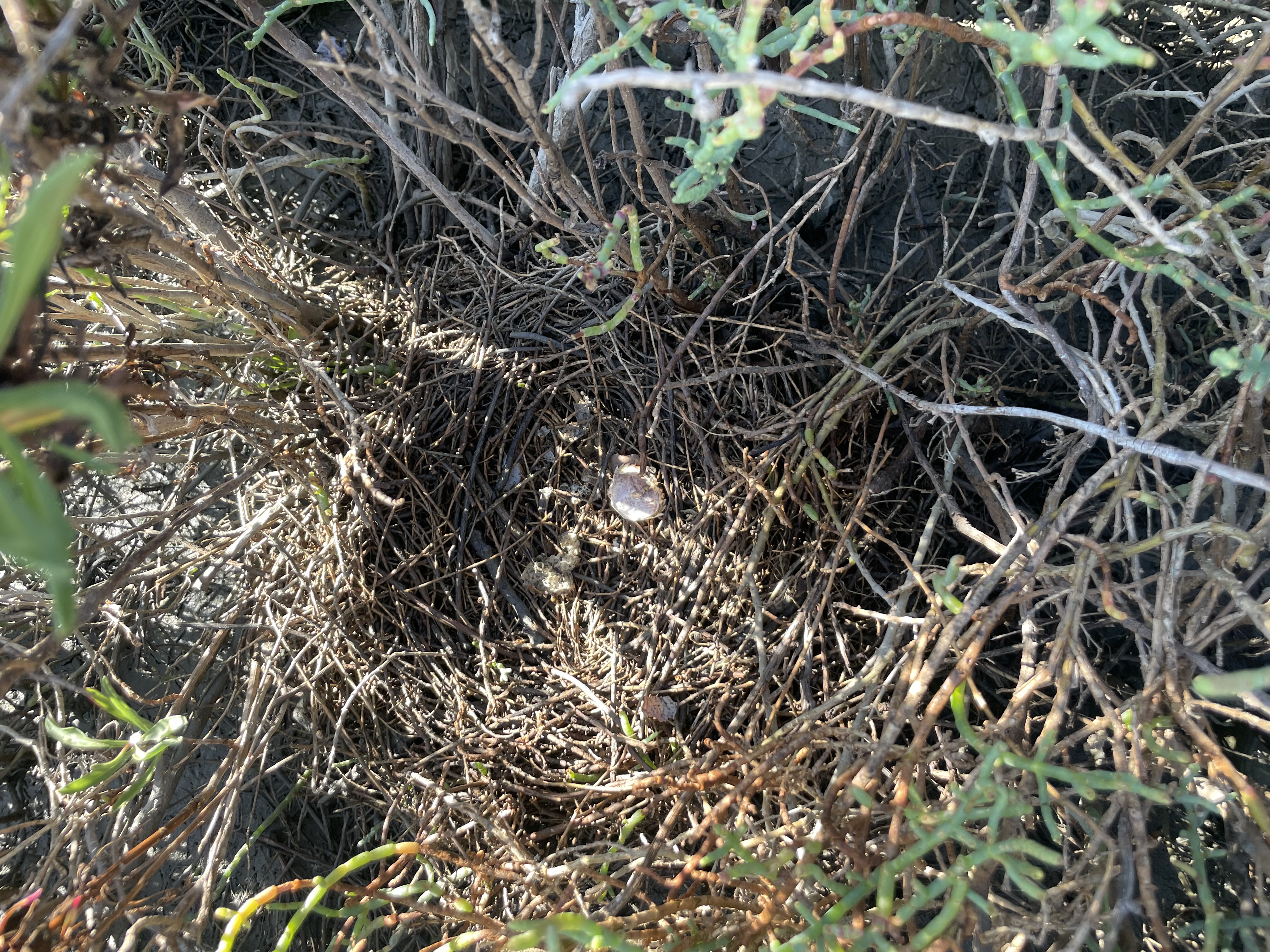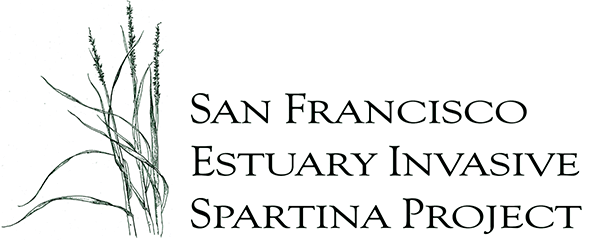
The San Francisco Estuary Invasive Spartina Project (ISP) treats and removes invasive Spartina (cordgrass), protecting native tidal marshes and mudflats across a 70,000-acre project area in San Francisco Bay. Thank you to all partners for your dedication and involvement in this critical and ongoing work!
Here are some project highlights from July to September 2024.
Monitoring and Treatment:
The 2024 Spartina monitoring and treatment season is in high gear, and busier than ever. Last year, the ISP team received approval from the U.S. Fish and Wildlife Service (USFWS) to resume phased treatment at the final six sites that had previously been restricted due to the careful management of Ridgway’s rails. Phased treatment began at three of these sites in 2023 and reduced invasive Spartina substantially; progress that ISP partners are continuing in 2024. Since last year, monitoring teams have seen a 93% reduction in hybrid Spartina at Cogswell Marsh along the Hayward Regional Shoreline, and an 85% reduction at Citation Marsh Central in the Roberts Landing complex.
This year, the project’s workforce development program hired and trained additional field staff to help cover the increased project scale, as well as providing vital opportunities for the emerging generation of stewardship professionals. In addition to the crew of seasonal field biologists, project leaders have hired five paid seasonal interns for a “pulse crew” of early career field technicians, to target amplified efforts with monitoring and treatment in the most highly-invaded sites. Pulse crew interns are learning about GIS mapping and data collection, plant identification, biological monitoring, invasive plant management, and a range of other field methods, gaining valuable experience and skills for jobs in the conservation field.
Thanks to partnerships with local agencies, teams are ramping up treatment at all sites. Partners at the East Bay Regional Park District are sharing airboats with ISP techs, allowing them to work full days on complex infestations without getting stranded by shifting tides. Similarly, ISP crews are sharing their contracted airboat with staff at the San Mateo County Vector Control District for their Spartina control work; their airboat shot a rod through the engine block early in the season and is out for repairs. These cross-agency partnerships allow for multiple entities to coordinate crew transport into marshlands, reducing impacts to sensitive areas.
Field biologists are also pulling samples for DNA testing to verify field data. The senior geneticist is training seasonal biologists on how to clean leaf samples before sending them out to a specialized laboratory for genotyping. Biologists are expected to pull anywhere from 325 to 400 samples by the end of the season.

Restoration:
The team of seasonal biologists is also hard at work monitoring habitat enhancements at restoration sites. To date, the restoration team and their partners have installed close to 600,000 native plants including marsh gumplant, native Pacific cordgrass, and upland transition zone species at 40+ sites. The crew has nearly completed annual photo points that track survivorship and expansion of plantings over the years. They are now monitoring survivorship of recently planted areas and tracking expansion and recruitment. Longtime staff are grateful for the enthusiasm and energy of this year’s early career professionals as they work together to steward the Bay’s shorelines.

Ridgway’s Rail Monitoring:
Monitoring for Ridgway’s rails started January 15 and wrapped up mid-April. Though the team is still putting together a formal report, team members are pleased to confirm breeding activity is occuring at sites that have been treated for invasive Spartina and restored with native vegetation as a part of this project. Along the Hayward Regional Shoreline, biologists discovered an inactive Ridgway’s rail nest (after breeding season had ended) in one of the planted stands of marsh gumplant (Grindelia stricta). Before treatment, this site was described as “a solid wall of invasive Spartina,” and is now a healthy stand of native gumplant.
Thank you:
Thanks to the wide range of collaborating organizations that make this work possible including: State Coastal Conservancy, US Fish and Wildlife Service, East Bay Regional Park District, California Dept. of Fish and Wildlife, Port of Oakland, SF Bay Joint Venture, California Invasive Plant Council , Olofson Environmental, Inc., San Francisco Bay Restoration Authority, Valley Water, and more than 150 project landowners, partners, and contractors. Together, we are working together to protect the Bay’s shorelines. If you are working at sites along creek mouths, shorelines, or any waterways that connect to the Bay, please get in touch with our team at info@spartina.org.
